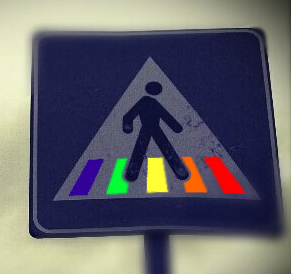
Often times we find ourselves busy trying to get things done in our daily lives that we don’t really take the time to stop and observe our surroundings along the way. There is so much natural beauty and vibrant colors that we often purposely give a blind eye to because we do not have the skill of observation. This article called “Color Walking” written by Phia Bennin and Brendan McMullan describes their experiences as they tried a new way of observing their surroundings.
The introduction of this article familiarizes the audience to a man named William Burroughs. Burroughs was an American novelist, short story writer, spoken word performer, and taught student on writing and how to writing with specific detail and color. Burroughs had many addictions to various substances throughout his life, but this is what also helped shape and mold him into the type of writer he is today and the out of ordinary techniques of observing environments to make writing more specific and unique.
As we continue to read through the article, the authors convey to readers that William Burroughs created a tool called color walks to help and inspire his students in finding a new way of observing and taking in the outside surroundings much more than one would otherwise. The task of the color walk as told by both authors is quite simple and requires you to think and observe with an open mind. The color walk is where you open the door, walk outside and pick a starting color. This color can be any color that immediately catches your eye as soon as you make your first steps outside. Once you have chosen a color, you continue walking and following all the objects you see with same shade of color that you have chosen. As you walk you are to follow each object one after another as they appear and continue following the color you have picked in whatever direction the objects lead you.
Continuing through the middle portion of the article, both authors state that they decided to give this method a try and wanted put this form of observation to the test and mentioned that they would also allow themselves to switch from color to color as they journeyed through their walk. Bennin and McMullan’s color walk took place at WNYC in lower Manhattan. The authors stated, “Stepping out the revolving door, we followed blues which led us to pinks, which pulled us towards violets.” The article also has an added in reference timeline of their recordings throughout the walk giving us an in depth source of analysis of the objects they followed and what times they followed them at. The walk started a little after 4pm with a beautiful blue scarf, followed by blue in basketball courts, and ending with purple and pink on clothing and in nooks and crannies. Towards the end of the article, the authors share their experiences and say that this method of observation keeps the colors and things seen to remain in your brain and eyes much longer and also helps in noticing so many objects and colors throughout the environment that one would not normally notice on a regular walk. The article comes to a conclusion by both authors sharing their advice for anyone else who would like to try the color walk for themselves. There best advice is to work with an uninterrupted full hour, picking a color that you really enjoy, and to also switch up colors if you get lost.